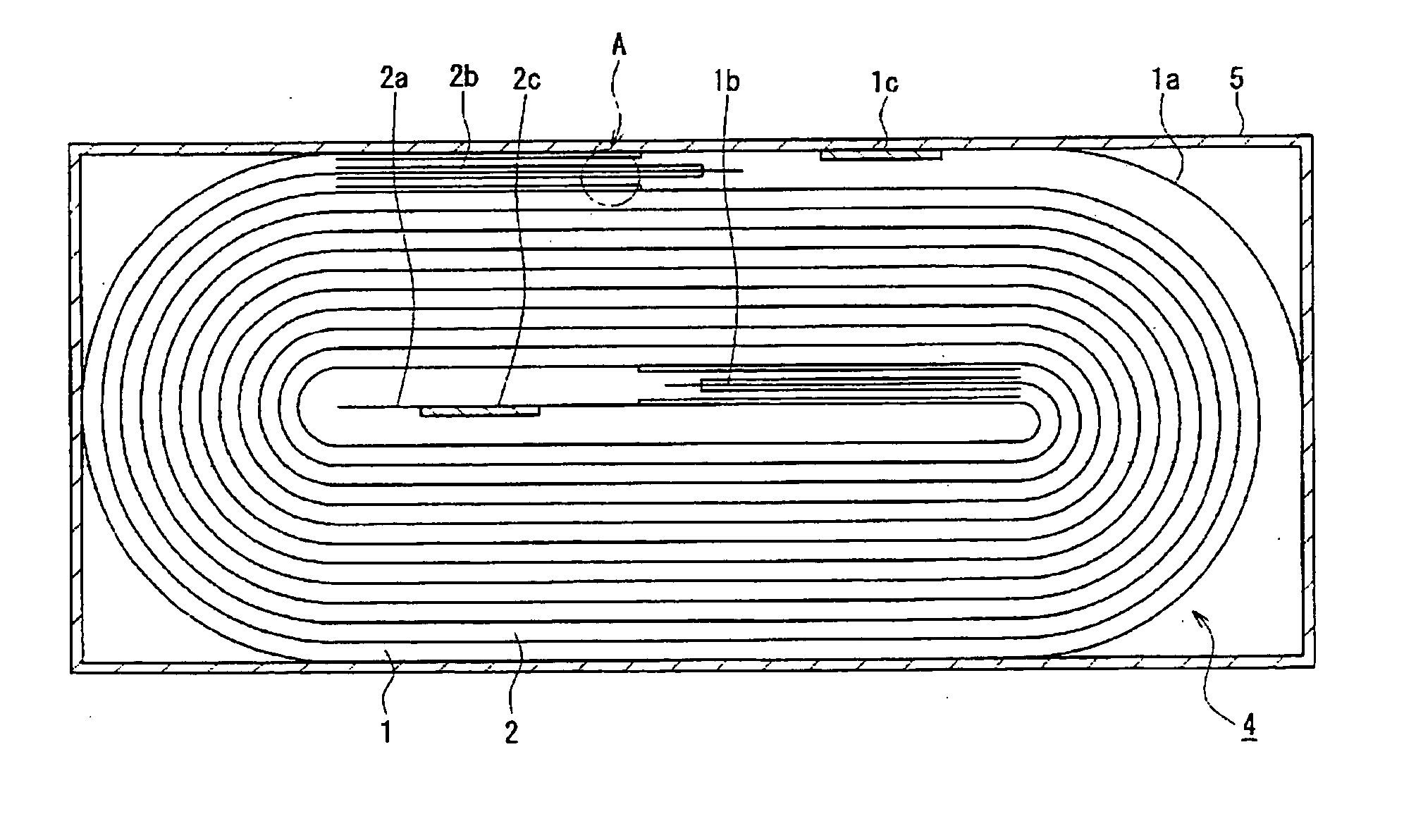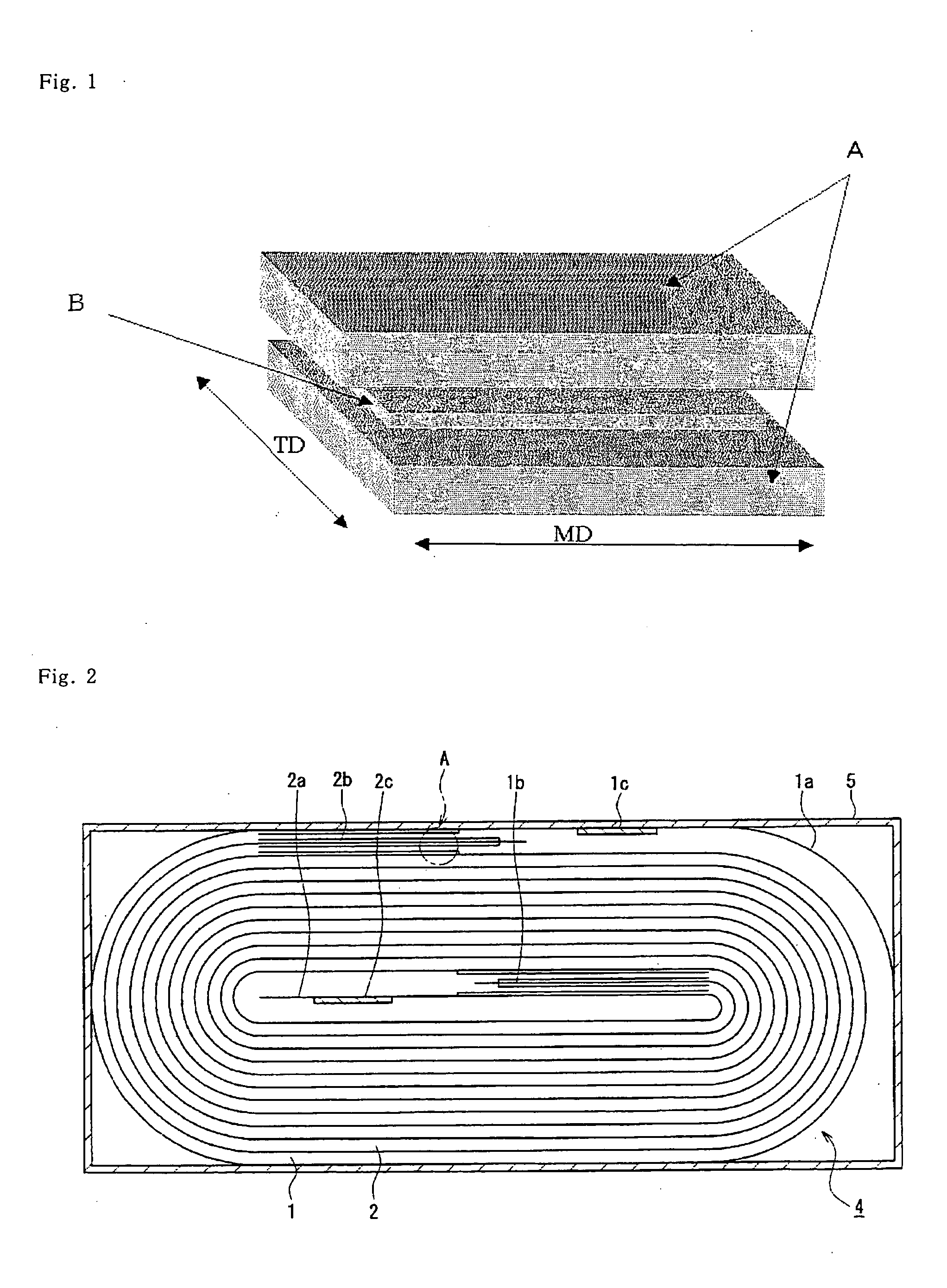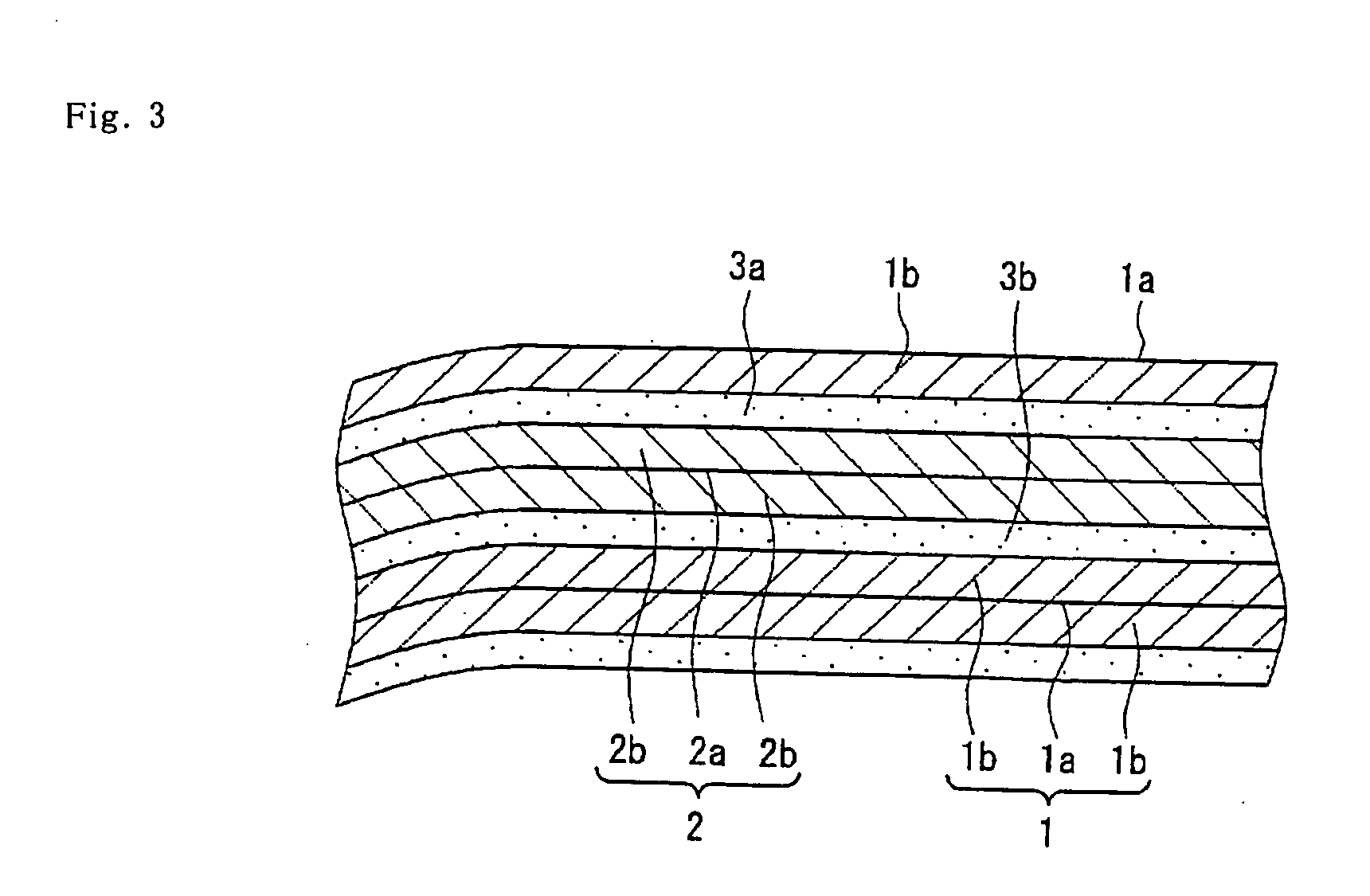Non-aqueous electrolyte secondary battery
- Summary
- Abstract
- Description
- Claims
- Application Information
AI Technical Summary
Benefits of technology
Problems solved by technology
Method used
Image
Examples
example 1
A non-aqueous electrolyte secondary battery having the structure shown in FIGS. 2 and 3 was produced as follows:
Lithium cobalt oxide (92 parts), acetylene black (3 parts) and polyvinylidene fluoride (5 parts) were mixed in N-methyl-2-pyrrolidone as a solvent using a planetary mixer to obtain a coating composition of a positive electrode mixture. Then, the coating composition was intermittently coated on a collector consisting of an aluminum foil having a thickness of 20 μm with a blade coater, dried and pressed. The collector carrying the layer of the dried positive electrode mixture was cut to a prescribed size to obtain a sheet-form positive electrode. To the positive electrode, a lead member made of aluminum was attached by ultrasonic welding.
High density artificial graphite (d002:0.336 nm, Lc: 100 nm) (97.5 parts), an aqueous solution of carboxymethylcellulose (concentration: 1% by weight, viscosity: 1,500 mPa.s to 5,000 mPa.s) (1.5 parts) and styrene-butadiene rubber (1 pa...
example 2
A non-aqueous electrolyte secondary battery was produced in the same manner as in Example 1 except that as the first separator, a microporous polyethylene film having a thickness of 20 μm, a gas permeability of 180 sec / 100 cm3, a coefficient of thermal shrinkage in TD of 35% measured after being kept at 150° C. for 3 hours, and a porosity of 40% was used, and as the second separator, a microporous polyethylene film having a thickness of 20 μm, a gas permeability of 120 sec / 100 cm3, a coefficient of thermal shrinkage in TD of 30% measured after being kept at 150° C. for 3 hours, and a porosity of 50% was used.
example 3
A non-aqueous electrolyte secondary battery was produced in the same manner as in Example 1 except that as the first separator, a microporous polyethylene film having a thickness of 22 μm, a gas permeability of 300 sec / 100 cm3, a coefficient of thermal shrinkage in TD of 40% measured after being kept at 150° C. for 3 hours, and a porosity of 40% was used, and as the second separator, a microporous polyethylene film having a thickness of 20 μm, a gas permeability of 100 sec / 100 cm3, a coefficient of thermal shrinkage in TD of 25% measured after being kept at 150° C. for 3 hours, and a porosity of 40% was used.
PUM
 Login to View More
Login to View More Abstract
Description
Claims
Application Information
 Login to View More
Login to View More - R&D
- Intellectual Property
- Life Sciences
- Materials
- Tech Scout
- Unparalleled Data Quality
- Higher Quality Content
- 60% Fewer Hallucinations
Browse by: Latest US Patents, China's latest patents, Technical Efficacy Thesaurus, Application Domain, Technology Topic, Popular Technical Reports.
© 2025 PatSnap. All rights reserved.Legal|Privacy policy|Modern Slavery Act Transparency Statement|Sitemap|About US| Contact US: help@patsnap.com



